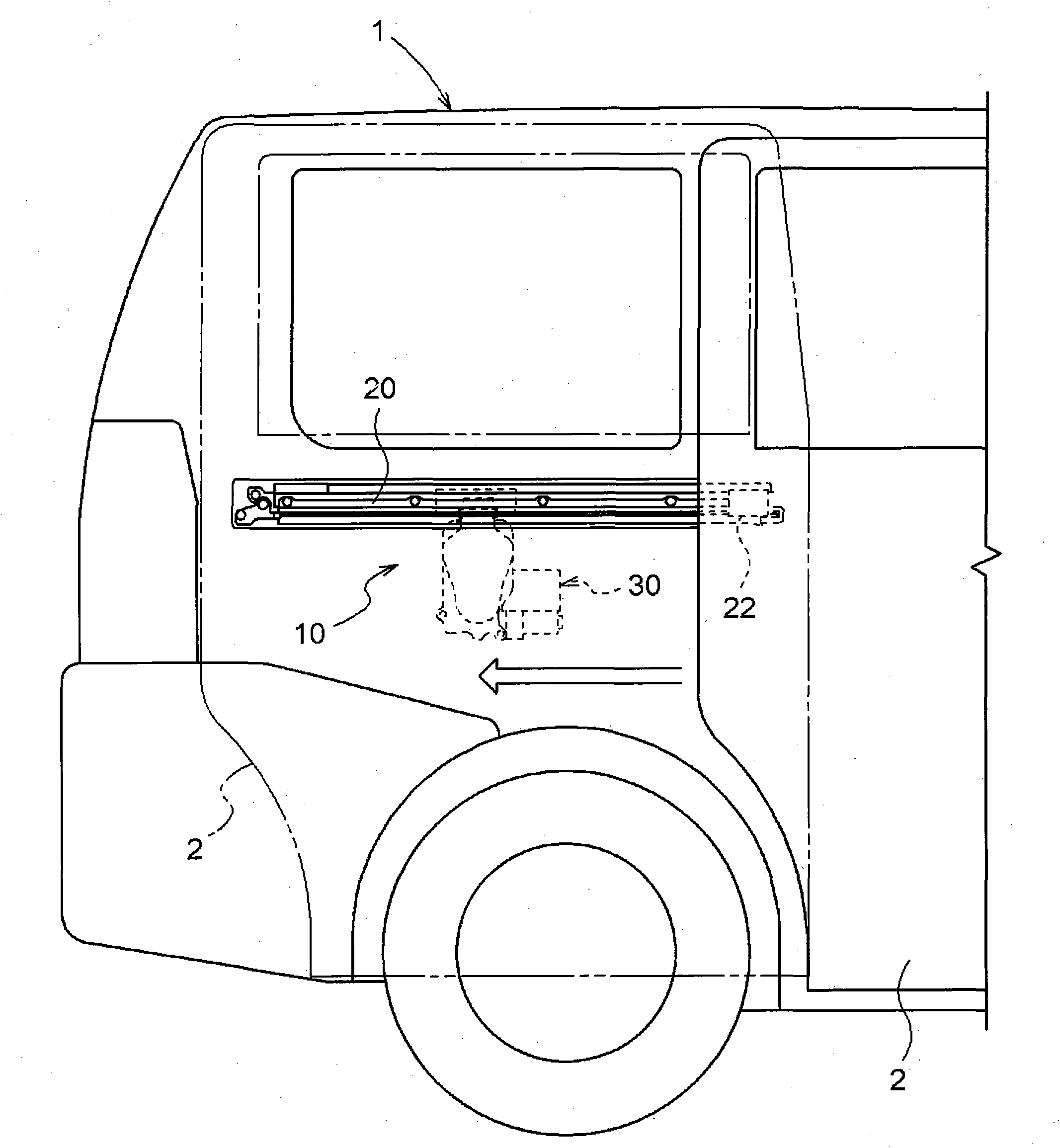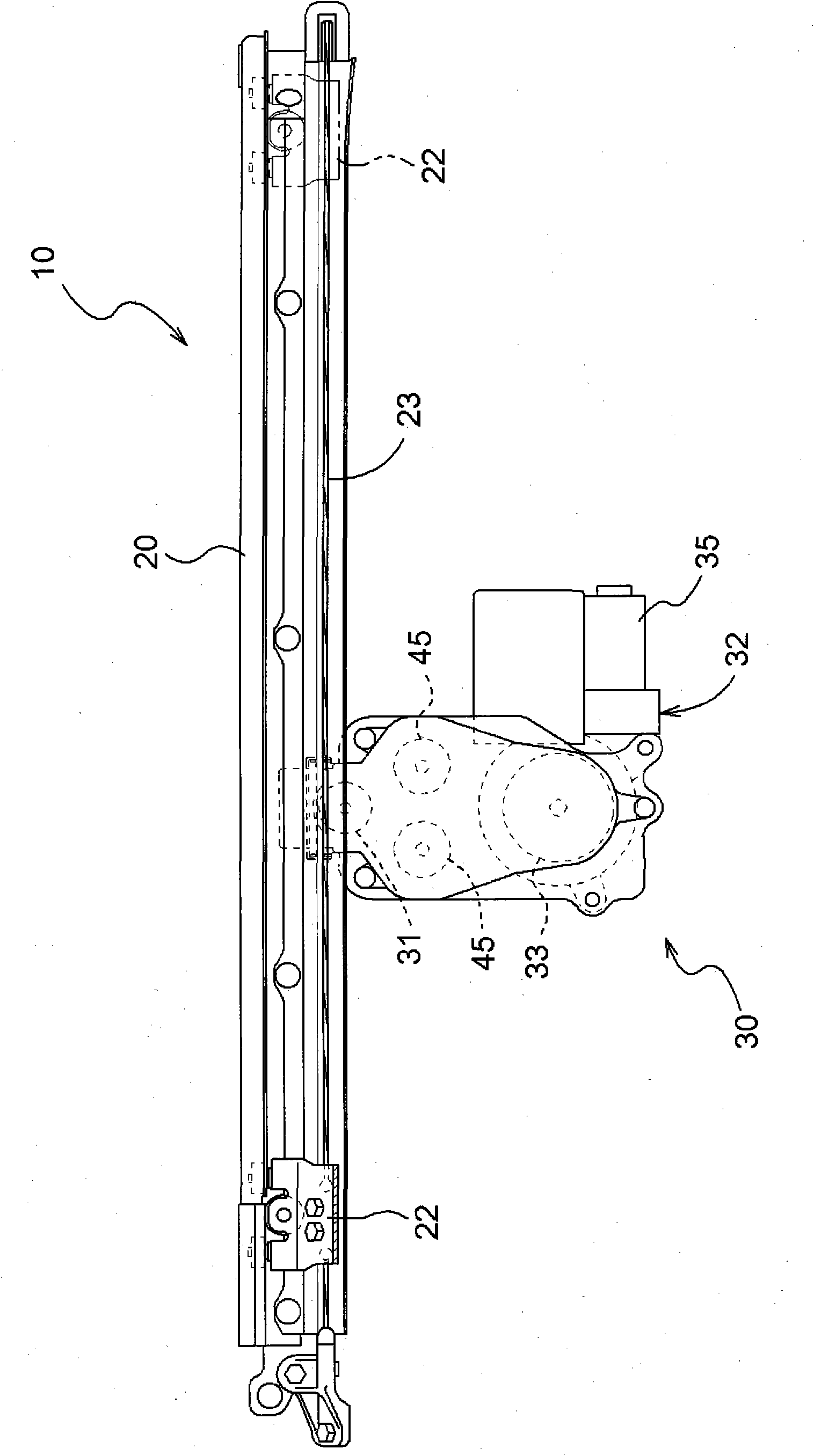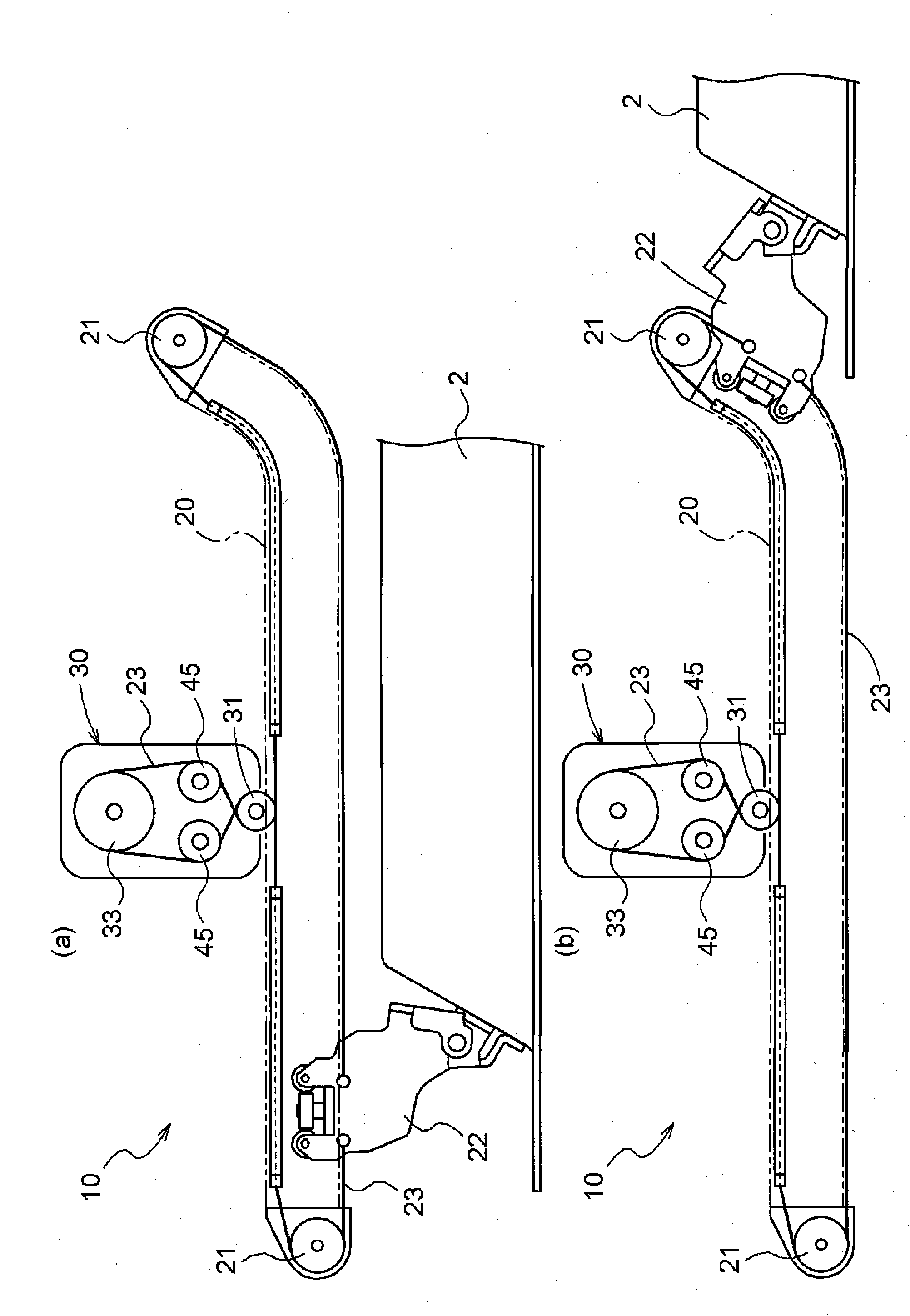Device for driving opening/closing body for vehicle
A technology for driving devices and opening and closing bodies, which is applied to vehicle parts, manual mechanisms, transportation and packaging, etc., and can solve the problems of large number of parts, inability to detect, and increased number of parts
- Summary
- Abstract
- Description
- Claims
- Application Information
AI Technical Summary
Problems solved by technology
Method used
Image
Examples
no. 1 approach 〕
[0062] The first embodiment of the present invention will be described with reference to the drawings.
[0063] figure 1 It is a side view of a vehicle 1 having a sliding door 2 as an example of an opening and closing body. This vehicle 1 has a vehicle door opening and closing device 10 as an example of a vehicle opening and closing body drive device, and can automatically perform opening and closing operations of the sliding door 2. figure 2 Is a side view of the vehicle door opening and closing device 10, image 3 Is its top view. In addition, in image 3 Here, the drive unit 30 is schematically shown for easy understanding of the operation of the drive unit 30. As shown in the above figures, the vehicle door opening and closing device 10 has a guide rail 20 and a drive unit 30.
[0064] The guide rail 20 is provided near the center in the height direction of the side surface of the vehicle 1, and the drive unit 30 is suspended from the guide rail 20 in the middle part of the f...
no. 2 approach 〕
[0085] The second embodiment of the present invention will be described with reference to the drawings. Picture 10 It is a schematic diagram of the drive unit 30 related to this embodiment. As shown in the figure, the tension mechanism 40 of the drive unit 30 also has a freely elastically deformable plate spring 42 fixed to the pulley cover 41 supporting the guide pulley 31, and a strain gauge 80 is provided on the plate spring. However, the shape of the pulley cover 41, the position of the fixed plate spring 42, and the location where the strain gauge 80 is installed are different. These differences are explained below.
[0086] In this embodiment, the pulley cover 41 is provided so as to cover the guide pulley 31 not only in the left-right direction but also to the lower side. At this time, in order to facilitate the receiving and releasing of the rope 23 without being blocked by the pulley cover 41, the lower end of the pulley cover 41 is fixed to the bottom plate 36 inside ...
no. 3 approach 〕
[0091] The third embodiment of the present invention will be described with reference to the drawings. Picture 11 It is a schematic diagram of the drive unit 30 related to this embodiment. The configuration of the tension mechanism 40 having the drive unit 30 is substantially the same as the configuration of the tension mechanism 40 described in the second embodiment, but the configuration of the end portion on the free end side of the plate spring 42 is different. The difference will be described below.
[0092] In this embodiment, the rope 23 is directly engaged with the leaf spring 42, and the tension pulley 45 is not provided at the end of each free end side of the leaf spring 42. Here, a bent portion 60 that is bent inward, that is, in a direction opposite to the direction in which the tension is applied, is formed at the end portion on the free end side of the leaf spring 42. In addition, such as Picture 12 As shown, a guide groove 61 for guiding the rope 23 is provided ...
PUM
 Login to View More
Login to View More Abstract
Description
Claims
Application Information
 Login to View More
Login to View More - R&D
- Intellectual Property
- Life Sciences
- Materials
- Tech Scout
- Unparalleled Data Quality
- Higher Quality Content
- 60% Fewer Hallucinations
Browse by: Latest US Patents, China's latest patents, Technical Efficacy Thesaurus, Application Domain, Technology Topic, Popular Technical Reports.
© 2025 PatSnap. All rights reserved.Legal|Privacy policy|Modern Slavery Act Transparency Statement|Sitemap|About US| Contact US: help@patsnap.com



